Photo





You’re like our local hero, man.
Aquaman (2018) dir. James Wan
2K notes
·
View notes
Photo

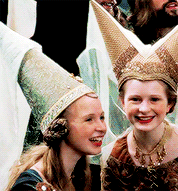





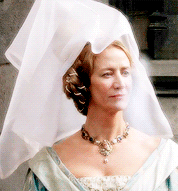
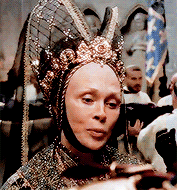

costume series: medieval fashion in period drama → hennins (steeple & butterfly) and headdresses (heart-shaped & horned)
The hennin was a popular 15th century hat much like that of a traditional Turkish fez. First appearing in France about 1428, it consisted of a cap of a stiffened fabric covered with a rich material with a cone or cylindrical construction over the top. It was worn on a 45 degree angle at the back of the head entirely concealing the hair which was drawn back off the forehead and covered by the hennin. Steeple hennins (1440-1490), were very rarely worn in England, although extremely popular in Europe. In Italy, some steeple hennins reached an astonishing half an ell high- 45 inches or ¾ of a metre from base to tip. Butterfly hennins (later 15th c) became more fashionable and supplanted the steeple hennin. The fabric under-cap with the wide black fold-back front which was worn underneath the hennin previously was abandoned in favour of very thin supporting straps which pass under the ears of the wearer. In an extremely short period of time another decorative feature made an appearance- two silver wires attached to the front of the hennin like a butterfly’s feelers and supported the veil in new and interesting ways. The heart-shaped headdress combined two of the medieval woman’s favoured headdress elements to make a new style of headdress the earlier caul or coif, and the padded roll. The top of the padded roll extended heavenwards, the middle of the roll descended into a V at the centre of the forehead making a heart shape when viewed from the front, hence the name. The horned headdress consisted of cones or which projected out at roughly a 45 degree angle and were wired up to resemble horns from which a pendant veil curtained the back of the head. The hair was completely concealed as decorum dictated. Starched white veils would then be attached to the headpiece using pins. It was worn from 1410 to 1420, but rarely to 1460. [x] [x]
2K notes
·
View notes
Photo




He could put ‘you’ at the end of that. ‘Yes, I know you.’ The idea that those two people know each other, knew each other when they first saw each other. That they recognised each other from their future. — Joe Wright.
PRIDE & PREJUDICE
2005 | dir. Joe Wright
7K notes
·
View notes
Text

Euterpe (metà II sec.), Museo Archeologico Nazionale, Napoli.
409 notes
·
View notes
Video
youtube
Isabella Of Portugal - The Daughter and Granddaughter of Kings
My first fan video of my dear Empress Isabella <3
11 notes
·
View notes
Photo
Hurrem <3









Every Hürrem Sultan Outfit: 100/∞
1K notes
·
View notes
Photo

On January 15th, 1559, Elizabeth I was crowned Queen of England at Westminster Abbey.
291 notes
·
View notes
Photo


“The duchess [of Bedford] was still second lady in England, yet her rank was many degrees more exalted than her fortune; therefore, as her children grew up, she was glad to provide for them at the court of her friend, queen Margaret. Her eldest daughter, the beautiful Elizabeth Woodville, was appointed ‘maid of honor’ to that queen, little deeming that she was one day to fill her place on the English throne.
While yet in attendance on her royal mistress, she captured the heart of a brave knight, sir Hugh Johns, a great favorite of Richard duke of York. Sir Hugh had nothing in the world wherewithal to endow the fair Woodville but a sword, whose temper had been proved in many a battle in France; he was, moreover, a timid wooer, and, very unwisely, deputed others to make the declaration of love which he wanted courage to speak himself. Richard duke of York was protector of England when he thus, in regal style, recommended his landless vassal to the love of her who was one day to share the diadem of his heir.
“‘To DAME ELIZABETH Wod
eville’
Right trusty and well-beloved, we greet you well.
Forasmuch as we are credibly informed that our right hearty and well-beloved knight sir Hugh John, for the great womanhood and gentleness approved and known in your person–ye being sole [single], and to be married–his heart wholly have; wherewith we are right well pleased.
Howbeit your disposition towards him in that behalf as yet, is to us unknown. We therefore, as for the faithful true, and good lordship we owe unto him at this time (and so will continue), desire and heartily pray ye will on your part be to him well-willed to the performing of this our writing and his desire.
Wherein ye shall do not only to our pleasure, but, we doubt not, to your own great weal and worship in time to come; certifying, that if ye fulfil our intent in this matter, we will and shall be to him and you such lord as shall be to both your great weal and worship, by the great of God, who precede and guide you in all heavenly felicity and welfare.
written by RICHARD, DUKE of York.”
Even if Elizabeth’s heart had responded to this earnest appeal of her lover’s princely master, yet she was too slenderly gifted by fortune to venture on a mere love-match. She probably demurred on this point, and avoided returning a decisive answer, for her delay elicited a second letter on the subject of sir Hugh’s great love and affection.
This time it was from the pen of the famous Richard Neville, earl of Warwick. It is not written as if by a stranger to a stranger; at the same time, by his promises of ‘good lorship’ (patronage) to Elizabeth and her lover, it is very evident he considers himself as superior of both.
‘To DAME ELIZABETH Wodevile.
‘Worshipful and well-beloved, I greet you well. And forasmuch my right well-beloved sir Hugh John, knight (which now late was with you unto his full great joy, and had great cheer, as he saith, whereof I thank you), hath informed me how that he hath, for the great love and affection that he hath unto your person, as well as for the great sadness [seriousness] and wisdom that he hath found and proved in you at the same time, as for your great and praised beauty and womanly demeaning, he desireth with all haste to do you worship by way of marriage, before any other creature living (as he saith).
I (considering his said desire, and the great worship that he had, which was made knight at Jerusalem, and after his coming home, for the great wisdom and manhood he was renowned of, was made knight-marshal of France, and after knight-marshal of England, unto his great worship, with other his great and many virtues and desert, and also good and notable service that he hath done and daily doth to me), write unto you at this time, and pray you effectuously that ye will the rather (at this my request and prayer) to condescend and apply you unto his said lawful and honest desire, wherein ye shall not only purvey [provide] right notably for yourself unto your weal and worship [profit and honor] in time to come, as I hereby trust, but also cause me to show unto you such good lordship [patronage] as ye by reason of it shall hold you content and pleased, with the grace of God, which everlastingly have you in his bliss, protection, and governance.
Written by the EARL of Warwick.”
[…] Nevertheless, sir Hugh met with the usual fate of a lover who has not the spirit to speak for himself, and deputes his wooing to the agency of friends,–he was rejected by the fair Elizabeth. He married a nameless damsel, and in course of time died posssessor of a single manor.
[…]The foregoing letters could not have been written till some time in 1452. Elizabeth was that year seventeen, and she was then, as Richard of York says, ‘sole and to be married’, that is, she was single and disengaged; […]. Some worldly considerations, besides her duty to her royal mistress queen Margaret, seem to have led Elizabeth to reject the Yorkist partisan Sir Hugh Johns, and accept the hand of the heir of the illustrious and wealthy lordship of Ferrers of Groby, a cavalier firmly attached to the house of Lancaster.
The time is not distinctly specified of the marriage of Elizabeth Woodville with John Gray; it probably took place soon after her rejection of the Yorkist champion in 1552. This wedlock was certainly a great match for the penniless maid of honor, for Gray was son and heir to lord Ferrers of Groby, possessor of the ancient domain of Bradgate, which was hereafter to derive such lustre from being the native place of Elizabeth’s descendant, lady Jane Gray.
[…] Elizabeth, after she was married, became one of the four ladies of the bedchamber of her royal mistress, Margaret of Anjou, in whose wardrobe-book, preserved in the office of the duchy of Lancaster, she is mentioned as “lady Isabella Gray, in attendance on the queen’s person”–the name of Isabella being, until she became queen, usually written instead of Elizabeth. Tradition declares that her marriage with the heir of Groby was a happy one.”
From: “The True Story of the White Queen”, by Agnes Strickland.
76 notes
·
View notes
Photo



Crispina (?), wife of emperor Commodus. From area sacra of republican time, next to temple of Hercules (1938). II century AD. Luni marble. Museo archeologico ostiense. Inv. 80
myglyptothek: Faces of ancient Rome
87 notes
·
View notes
Photo

Maria Of Trastamara. Infanta Of Castile & Aragon Queen Of Portugal. Her Daughter, Isabella Of Aviz, Infanta Of Potugal & Holy Roman Empress.
#isabel tve#maria of aragon#susana abaitua#house of trastamara#Modern History#Carlos Rey Emperador#Isabella of Portugal#Blanca Suárez#House of Aviz
35 notes
·
View notes
Photo

Stefanie Reinsperger as Empress Maria Theresa in the second season of Maria Theresia.
272 notes
·
View notes
Text
I seriously just saw someone in the Cleopatra tag saying Cleopatra should be played by a mixed race woman, because she was obviously mixed race, and they used this bust as evidence saying “IT’S CLEARLY AN AFRO”.
Ummmmm…yeah….no on both counts.

She was Macedonian Greek and Persian, (That’s just one of MANY examples of evidence I could give). She was not part African. At all. And how in the WORLD is her hair there an AFRO???
That’s the traditional “melon” hairstyle worn by Ancient Greek women and Ptolemaic Queens.
In contrast to men, women continued to wear long hair, usually curled on the forehead and sides of the head and drawn into a bun at the nape. Later, a very distinct youthful style was in fashion, the so-called “melon”, named because the hair was divided into a number of segments running like the ribs of a melon from the forehead to the back of the head .
You can literally see the bun at the back… it’s nowhere near resembling an afro. HONESTLY PEOPLE!!!
57 notes
·
View notes
Photo

Today in History- 1451. Queen Isabella I Of Castile is born.
Isabella was daughter of the king of Castile, John II, and of the second woman of this one, the Portuguese princess Isabella de Aviz. In this marriage also Juan II would inflict the infante Alfonso, called the Innocent. But in regard to the succession to the throne, both brothers, Isabella and Alfonso, had the first son of John II, had in the first marriage of the monarch with Mary of Aragon: the future Henry IV of Castile, who then held the title of Prince of Asturias like successor of John II. For this reason, the first feature to highlight in the biography of Isabella the Catholic is that she was not destined to reign because she was not a firstborn, but rather that her future was destined to be given to an advantageous marriage with a member of high birth, as it used to be custom among the families of medieval royalty. Therefore, if Isabella managed to reign was, first, by a cluster of various circumstances, but also, no doubt, by his determined action to govern when that range of events put on a platter the possibility of being queen of Castile and Leon.
http://www.mcnbiografias.com/app-bio/do/show?key=isabel-i-reina-de-castilla-y-leon
#Isabella I of Castile#michelle jenner#isabel tve#medieval castile#Medieval women#woman in history#WOMEN IN POWER
9 notes
·
View notes
Photo

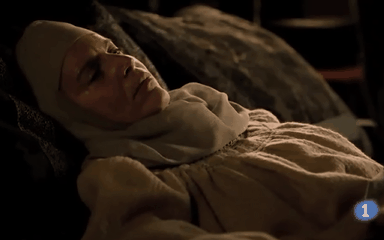


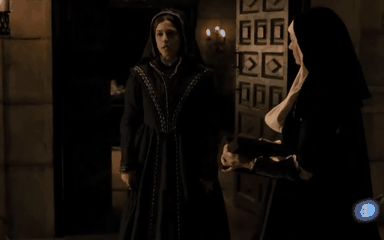

Today in History- 1555. Queen Joanna I Of Castile dies
“I am not obliged to give God any explanation. It is he who owes me, for the existence that has made me suffer“ Joanna I, Queen Of Castile and Aragon in “Carlos, Rey Emperador” 2014
“Know all of Castile, that your queen has died” Eleanor Of Harburg, Dowager Queen Of Portugal & France in “Carlos, Rey Emperador” 2014
#Modern History#house of trastamara#joanna i of castile#Irene Escolar#isabel tve#la corona partida#Laia Marull#Carlos Rey Emperador
30 notes
·
View notes




